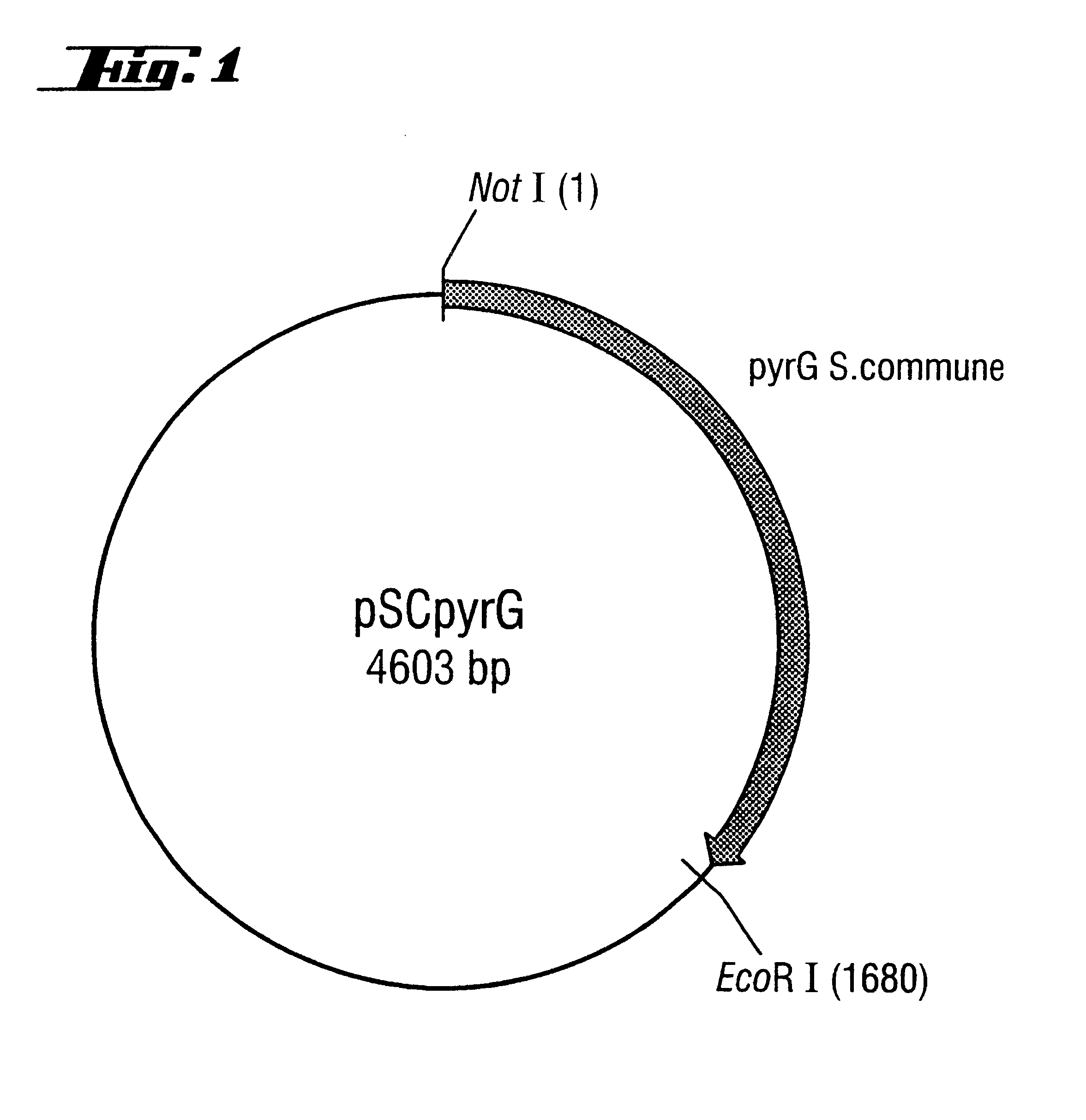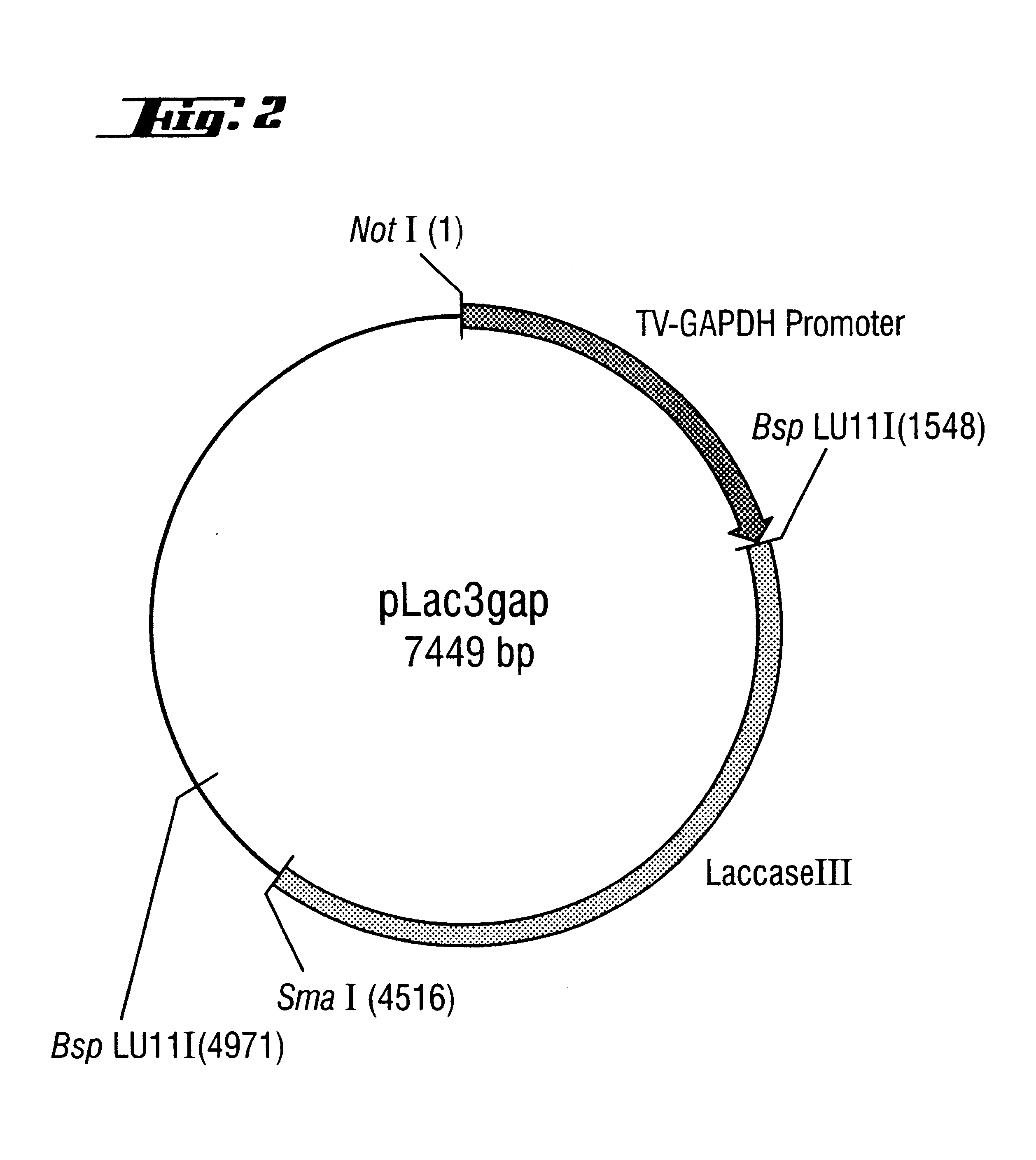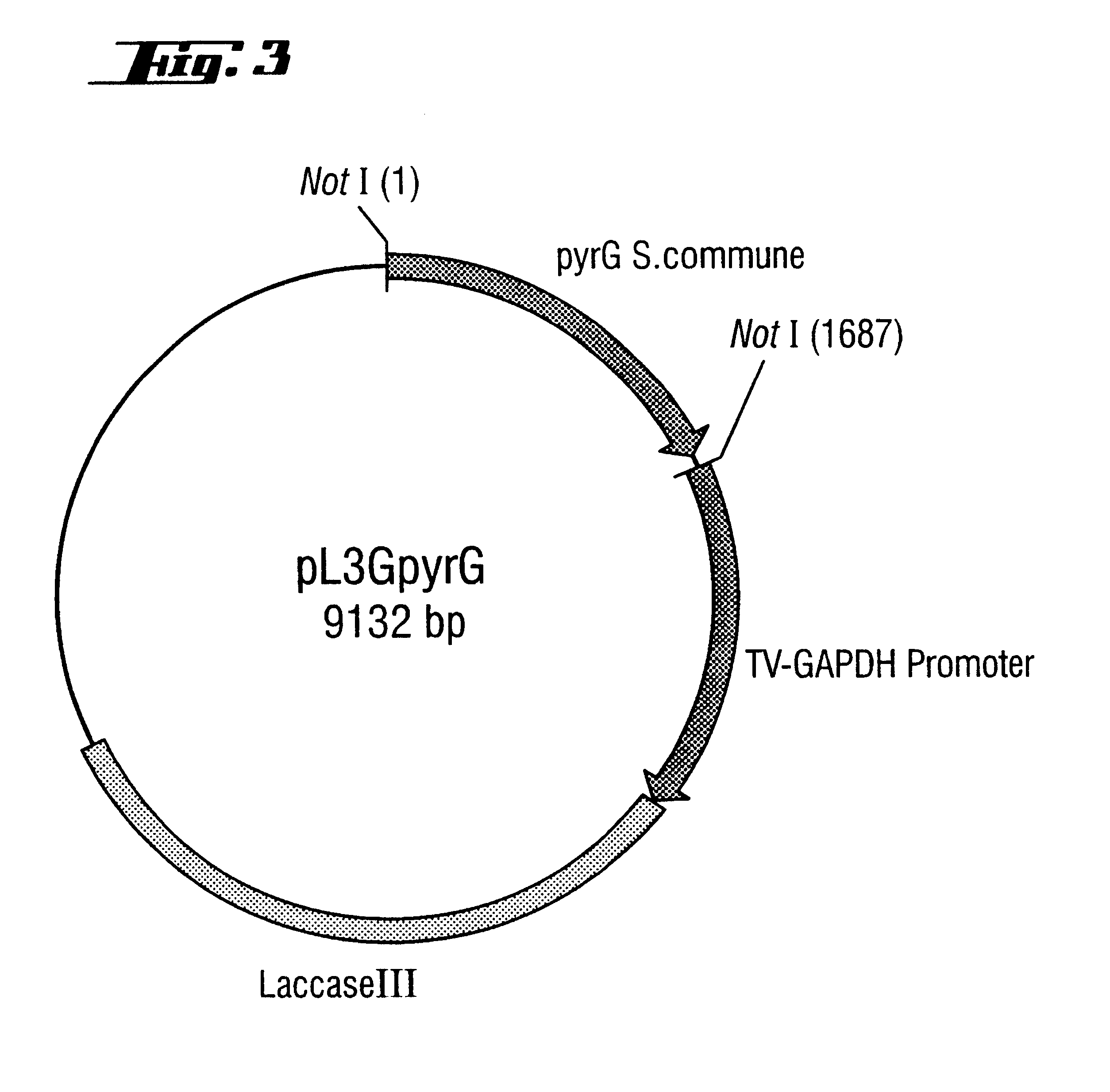Expression system for producing proteins
a technology of expression system and protein, which is applied in the direction of biochemistry apparatus and processes, enzymes, sugar derivatives, etc., can solve the problems of low production rate in particular of eukaryotic proteins, absence of post-translational modification of expressed proteins, and insufficient production ra
- Summary
- Abstract
- Description
- Claims
- Application Information
AI Technical Summary
Benefits of technology
Problems solved by technology
Method used
Image
Examples
2nd example
Isolation of pyr G-deficient Mutants of Trametes Versicolor
Auxotrophic mutants of Trametes versicolor with a gene defect in pyrimidine metabolism (pyr mutants) were isolated by a method based on that described in Boeke et al., Methods Enzymol. (1987) 154, 164-175. The selective agent used was the genotoxic substance 5-fluoroorotic acid (FOA). Mutagenesis of Trametes versicolor protoplasts took place by UV treatment.
A: UV Mutagenesis:
The monokaryotic strain Trametes versicolor F2 100 described in the 1st example was used for the mutagenesis. Protoplasts of this strain were prepared as described in the 1st example.
A BioRad UV linker (5.8 W / cm.sup.2, distance from the UV source 16 cm) was used for the mutagenesis. The number of protoplasts used for the mutagenesis was 8-10.sup.9. Protoplasts of Trametes versicolor were introduced into a Petri dish and irradiated with UV light for periods of various length. It emerged from this that, under the conditions described, irradiation for 60 se...
3rd example
Transformation of pyr G-auxotrophic Trametes Versicolor Strains with the pyr G Gene from Schizophyllum Commune
A: Isolation of the pyr G Gene from Schizophyllum Commune
The isolation and DNA sequence of the pyr G gene from Schizophyllum commune (referred to as URA1 gene in the publication) is described in Froeliger et al., Gene (1989) 83, 387-393. Mycelium of Schizophyllum commune (strain ATCC 44201, purchased from the ATCC American Type Culture Collection, 12301 Parklawn Drive, Rockville, Md. 20852-1776, USA) was produced in malt extract medium as described in the 1st example for Trametes versicolor. Isolation of chromosomal DNA likewise followed the method for Trametes versicolor and is described in the 4th example. The pyr G gene was amplified by PCR from chromosomal DNA of Schizophyllum commune. This was done by using primers A and B (derived from the sequence published in Froeliger et al., Gene (1989) 83, 387-393), with which it was possible to amplify not only the coding region ...
4th example
Cloning of T. Versicolor Laccase Genes
A: Production of a Chromosomal Gene Bank from Trametes Versicolor
Genomic DNA from T. versicolor was isolated from the mycelium from a shaken flask culture. 1 g of mycelium of T. versicolor was ground to a fine powder using a mortar and pestle in the presence of liquid nitrogen. The powder was placed in a sterile sample vessel and immediately mixed with 5 ml of extraction solution (0.1 M tris-HCl, pH 8.0, 0.1 M EDTA, 0.25 M NaCl, 0.6 mg / ml proteinase K) and 0.5 ml of a 10% (w / v) sodium lauroylsarcosine solution. After incubation at 50.degree. C. for at least 2 h, the mixture is mixed with 0.85 ml of 5 M NaCl and 0.7 ml of a 10% (w / v) CTAB solution in 0.7 M NaCl and incubated at 65.degree. C. for 30 min. After addition of 7 ml of a chloroform / -isoamyl alcohol mixture (24:1), the mixture is shaken and the two phases are separated by centrifugation. The aqueous phase is removed, and chromosomal DNA is precipitated by adding 0.6 part by volume of iso...
PUM
| Property | Measurement | Unit |
|---|---|---|
| pH | aaaaa | aaaaa |
| pH | aaaaa | aaaaa |
| volume | aaaaa | aaaaa |
Abstract
Description
Claims
Application Information
 Login to View More
Login to View More - R&D
- Intellectual Property
- Life Sciences
- Materials
- Tech Scout
- Unparalleled Data Quality
- Higher Quality Content
- 60% Fewer Hallucinations
Browse by: Latest US Patents, China's latest patents, Technical Efficacy Thesaurus, Application Domain, Technology Topic, Popular Technical Reports.
© 2025 PatSnap. All rights reserved.Legal|Privacy policy|Modern Slavery Act Transparency Statement|Sitemap|About US| Contact US: help@patsnap.com



